Active Learning Methodologies for Increasing the Interest and Engagement in Computer Science Subjects in Vocational Education and Training
Abstract
1. Introduction
2. Theoretical Foundation and Justification
- Flipped classroom (FP) is a pedagogical approach that has been employed frequently to enhance the student interest and motivation levels and that has been applied successfully in VET education (Guan et al., 2015; Villalba et al., 2018). The main idea is to invert the traditional order of teaching: what used to happen inside the classroom now takes place outside it, and vice versa. In other words, theoretical or procedural explanations are provided to students in digital format for an autonomous study outside the classroom, and practical activities, exercises, and case studies that would traditionally have taken place outside the classroom are then carried out during classroom time (Lage et al., 2000). However, the efficacy of FP depends on two key elements: significant commitment, and the capacity for self-regulation. These features are necessary because, as the course progresses, students may experience a diminution in their level of interest and motivation. Moreover, this decline may be particularly pronounced when students encounter learning difficulties, exhibit disruptive behaviour, or experience a negative classroom environment.
- Gamification is also a common method of promoting motivation and interest. It involves the application of game-like elements to the learning environment to encourage greater student participation and engagement. These activities may include a wide variety of alternatives, such as the use of new technologies for blended learning (Kholifah et al., 2020), inclusion of elements of gamification (Jayalath & Esichaikul, 2022), or even the use of educational games (Lihui Sun & Hu, 2023) and virtual reality (Angraini et al., 2023; Bacca et al., 2015; Bacca Acosta et al., 2019). In short, there are three main approaches to gamification. These are the inclusion of game elements in teaching; the use of serious games for learning; and gamified project-based learning, in which a game is designed and built. Gamification has shown positive results when applied to VET, see Samah et al. (2022). For a more detailed review of the application of gamification in VET, please refer to Huang et al. (2023); Samah et al. (2024).
- Project-Based Learning (PBL) stands out among active methodologies (Blumenfeld et al., 1991), which is based on teamwork to plan, create, and evaluate a project that responds to the needs posed in a given situation. It is well-suited to STEM education (Mills & Treagust, 2003), and although it may be complex to implement, it fits well with vocational education profiles (Chiang & Lee, 2016; Jalinus et al., 2017). Moreover, it has a strong impact in the improvement in the classroom climate and the personal development, a very important factor since basic VET levels generally exhibit a high proportion of students with disruptive profiles and a prior history of academic failure (Martín de Soto Domínguez, 2021). For a deeper review on PBL, the reader is referred to Megayanti et al. (2020); Thomas (2000).
- Design Thinking (DT) and Cooperative Learning (CL) are closely related to PBL and are other important exponents of active learning methodologies. DT involves the analysis of concepts or issues in order to introduce changes or enhancements, or even the generation and construction of solutions, with an emphasis on innovation and creativity (Calavia et al., 2023; Cross, 2023; Guaman-Quintanilla et al., 2023). It has also been applied at different educational levels, increasing students motivation, and promoting cooperation, teamwork, and creative thinking (Latorre-Cosculluela et al., 2020). For a more in-depth examination of DT in various educational settings, levels, and areas, the reader is referred to Panke (2019). Similarly, in a CL situation, the group of learners works together to achieve their individual and collective goals. For the group as a whole to succeed, it is crucial that each team member achieves their goals. This requires the contribution of knowledge and effort from all team members (Johnson & Johnson, 1987).
- The implementation of active learning methodologies in introductory Computer Science courses in VET increases student commitment and reduces absenteeism rates.
- There is a significant relationship between the use of active learning methodologies and student engagement and involvement in activities and content, and academic performance in early-stage Computer Science courses within VET.
3. Methods
- The case study description is consistent with the proposal, depicting the particular situations, the context, the instruments used, the data collection and analysis, and the validation.
- The description of the characteristics of the groups, which manifests the objective reality of the individuals.
3.1. Groups
3.1.1. First Year of WAD, Subject Programming (WAD1PR)
3.1.2. First Year of WAD, Subject Markup Language (WAD1ML)
3.2. Methods and Projects
3.2.1. Project for Programming Group
- Obstacles (points) through which the thief cannot pass. These must be respected.
- Different routes and starting points with different conditions (thief’s speed; whether or not the speed is being reduced; roads with/without access; traffic jams; etc.).
- The police officers know some of the places that the thief has passed through.
- The time taken to reach certain points (depending on different constraints).
- Constraints on the thief’s movements.
- The shortest path between origin and destination according to Dijkstra.
- The complete route of the thief (all the points he/she has passed through), complying with the time of arrival at the end point.
- The coordinates of the route saved in a CSV file.
- The police strategy followed, which can be either to capture the thief or surround it.
3.2.2. Project for Markup Language Group
- The possibility of incorporating hardware based on Ultra-Wide Band (UWB) sensors. The collected data can be stored and incorporated into the structure of the XML that the students have to design to compute the robot position using geometric procedures. The use of hardware depends on the financial resources and time available to introduce it as part of the solution. The Ultra-Wide Band module DWM1001 was used for localisation in the classroom to carry out a localisation experiment (https://www.qorvo.com/products/p/DWM1001-DEV, accessed on 10 April 2025).
- The other option is to assume that the distance measurements are available and that the project starts with the XML file structure itself. In this case, it is assumed that the sensor measurements are given in advance. This means that the internal calculation of sensor positions is no longer necessary. The measurements are in a file, which is read to know the registered data and compute the robot position.
3.3. Evaluation
- Daily and continuous evaluation: Students were evaluated daily to draw conclusions about their performance as close as possible to what happened in the classroom. This was based on evidence and aimed to minimise bias. To this end, the most significant issues of the day were noted in a diary. In addition, each challenge solution was delivered via the educational platform after receiving feedback in the classroom, so that students could identify their mistakes and track their progress. The grade obtained for each day was made known to them via the educational platform. This made it possible to monitor progress closely, avoiding disproportionate progress from one day to another in the project preparation and execution.
- Error-based: Students should view errors as an opportunity to learn, rather than as a cause for frustration. Effective time management of tasks was also considered.
- Research as a background: The knowledge received in class had to be expanded through the execution of the project and the search for information.
- Project-based evaluation: In order for a project to be positively assessed, 80 percent of the daily follow-ups had to be passed and the learner had to demonstrate enough knowledge during the follow-ups. To increase motivation, the topics covered in the projects are based on issues in which the students are interested and they can even propose modifications.
3.4. Data Collection and Analysis Procedures
- Questionnaire: An initial questionnaire was conducted to find out the initial knowledge of the students of each subject. The initial questionnaire was developed based on similar previously developed and validated questionnaires, and also validated by a committee of experts composed of teachers to ensure clarity, appropriateness, and alignment with the study objectives.
- Diary: Observation was used as instrument to measure the student progress. With the aim of describing what was happening day by day inside and outside the classroom, the observation was carried out as described in Selltiz et al. (1959). The observations were carried out daily in a structured way. Events were carefully classified and categorised in the diary, with date, time, goals, and competences to be achieved in each session, which helped to ensure data quality. Direct observations were registered in detail, to allow replication by other researchers. Data recorded for each activity included the activity itself, date, time, competences involved, student’s behaviour and development, resources used, and any decision or change made to the activity during the lesson. All observations were contrasted by teachers and external researchers.
- Exams: Carried out by trimester and at the end of the course.
- Rubrics: To receive feedback for the different assignments. This also enabled students to check the quality of their work before submitting it.
- MS Teams as communication tool: In addition to contacting students in specific situations, the challenges carried out were collected daily via the platform. Feedback was provided either verbally or via the platform, and for the final project evaluation, a rubric was used. This made it possible to evaluate the follow-ups according to the objectives set for each day.
- Interviews: After each exam or evaluation, the students presented the problems they had encountered to start a discussion or debate. Semi-structured and unstructured interviews were conducted with students and the school counsellor to find out about unobservable facts such as meanings, motives, points of view, opinions, insinuations, assessments, and emotions (Díaz-Bravo et al., 2013). They were also supervised by an expert on research topics.
- Sensors: used to collect location data. The data obtained could be used by the students for testing and practice, but due to some failures, their use was discarded.
- A descriptive non-experimental approach was used for the quantitative analysis.
- Ideation and design: Different solutions were proposed and their appropriateness and effectiveness were considered for evaluation. Additionally, the level of student involvement in the sessions was considered to determine whether each project stage had been completed correctly.
- Behaviour and class climate: These were two critical factors since they affect motivation and results. Individual behaviour and collaboration with other students, such as discussing possible solutions or helping each other, were considered in the overall evaluation of the proposal.
- Evaluation grades: Exam grades and project presentation demonstrate student performance and communication skills. A statistical analysis is carried out to compare the results of previous courses, taking into account the evaluation grades.
- Shapiro test to determine whether they follow a normal distribution. If non-normality is indicated, one of the following tests is applied: The Mann–Whitney U test, which does not assume normality of the samples and uses parameters of central tendency such as the median, which is less sensitive to extreme values than the mean. Alternatively, the Kolmogorov–Smirnov test is used to see whether the samples come from similar distributions.
- Kruskal–Wallis to compare the scores of different groups, which does not assume that the samples are normally distributed.
- Dependency: Contrasting data gathered about activities, students, and results. Data were also analysed by different researchers to reach coherence in their interpretation.
- Credibility: To ensure a complete understanding of the participants’ experiences, specially with the problem statement. The long stays in the classroom by the same teacher allowed time to think of different alternatives and evaluate them. Moreover, the same experience was applied to different students with different characteristics, collecting quantitative data from qualitative data; and considering the specific characteristics of the students for the evaluation.
- Confirmation: In order to erase any possible bias of the researcher. For example, solving different exercises using the same method, or solving a given exercise using different methods.
- Transference and replicability: To apply or transfer the results to other contexts.
4. Results
4.1. Qualitative Analysis
- Stress management in each challenge: More than 85% of the students in both groups agreed that they were very stressed at the beginning, that they found the project very difficult, even more so with the follow-ups.
- The skills acquired in programming: They all agreed that they learned other ways of doing the same thing and that it helped them to learn other things from what they did in class. They all agreed that the project was one of the most useful course activities to learn programming.
- Effectiveness of feedback: More than 70% of the students said they found it useful.
- Level of motivation: All the students agreed that they liked the project.
- Things to improve: Around 50% of students said they would have liked to spend more time working on the graphical interface, although they acknowledged that this would not have left enough time to complete the entire project.
4.2. Quantitative Analysis
- Formal aspects: presentation of slides, documentary structure, organisation, grammar and spelling, quality of information and format of documentation. Its weight in the final project grade was 10%.
- Contents: difficulty, degree of resolution of the proposal, operation, graphic design, originality and internal documentation. Its weight in the final project grade was 80%.
- Presentation: quality of the oral presentation, time spent, content, and accuracy of the answers to the questions posed. Its weight in the final project grade was 10%.
4.3. Programming Group
- Calculate the Dijkstra route.
- Position initially the police officers.
- Search for all possible routes.
- Find the best route for the thief.
- Relocate the police officers based on the thief’s last known location.
- Display the results.
- A collection/list (Map or List) in which they first store all nodes and their minimum distance to the destination. They then select which node to analyse next.
- Different arrays for nodes, temporal distances, and final distances. In this case, each node includes a list of neighbours, and neighbours are checked for each node.
- A list of all nodes, along with a list of edges and the initial and final nodes that compose it.
- A queue where the nodes to be analysed are stored, among others.
- The one with the fewest Dijkstra nodes: This is based on the fact that, as Dijkstra is the shortest route, there is certainty that there will be police officers on it.
- Search for the route with the shortest distance (after Dijkstra’s): This will ensure the fastest journey time.
- Look for routes that have the fewest adverse conditions.
- Initial configuration.
- Game.
- Writing the results in a CSV file.
4.4. Markup Language Group
4.5. Comparison, Additional Groups, and Statistical Analysis
4.5.1. Comparison Between Markup Language and Programming
4.5.2. Comparison Between Markup Language Groups of 2023 and 2024
4.5.3. Comparison of All Non-Distance Groups of Markup Language
4.5.4. Additional Distance Learning Markup Language Group
5. Discussion
- Difficulty of the challenges: They stated that, when they started, they thought the challenges were unattainable. Later on, however, they felt much more capable.
- Motivation by playing: They all agreed that the game encouraged them to persevere. They commented that they continued to discuss the challenges even during breaks and at home.
- Feasibility of follow-ups: They agreed that the daily follow-ups were useful for providing them with quick feedback, which they considered positive. However, they also found it partly stressful.
- Recommendations received: They commented that they would have liked to learn more about Java’s visual side.
- The implementation of active learning methodologies in introductory Computer Science courses in VET increases student commitment and reduces absenteeism rates. Both groups showed great interest in and motivation for carrying out the activities, and appreciated their practical orientation. In addition, doing projects consisting of games has shown to be a great alternative to motivate students to engage with the subject, work independently outside of class hours, and collaborate with classmates to develop and discuss solutions. These methodologies therefore make it possible to foster students’ interest, improve the classroom climate, and motivate students, in line with the findings in the literature (Anwar et al., 2019; Samah et al., 2022). It can also be concluded that it may decrease the dropout rate, which is relatively common in basic vocational education and training, and was a particular problem in previous years when students felt unable to keep up with the class. By adapting active methodologies to VET, students feel they can develop the project and move forward with their classmates, sharing ideas and solutions, without feeling displaced or disconnected from the class.
- There is a significant relationship between the use of active learning methodologies and student engagement and involvement in activities and content, and academic performance in early-stage Computer Science courses within VET. Student participation in activities and project development improved notably, with the vast majority showing a high level of interest and engagement in class. This significantly improved the classroom atmosphere, with fewer interruptions and distractions, allowing for higher-quality individual and collaborative study. It also enabled more in-depth study of the content, promoting innovation and creativity (Calavia et al., 2023; Cross, 2023; Guaman-Quintanilla et al., 2023). However, this was not initially reflected in the grades, with only 50% of students passing the first examination. This could be due to the complexity of the content and the project in the case of the Programming subject, where the students’ improvement was more noticeable, or due to the continuous assessment introduced on the Markup Language course this year, which had not been applied in previous years. In any case, the students’ good assimilation and application of the concepts is worth highlighting, as is the fact that more than 75% of students who attended class regularly passed the second-chance exam and project evaluation positively. However, although gamified PBL can effectively enhance learning outcomes, the evaluation should be re-designed beyond traditional educational tests as indicated in Huang et al. (2023).
5.1. Programming Group
- Classes and relationships: In general, the attributes and relationships between classes were well conceived, although, as expected, it took time to understand the casuistry. The concepts of class, object, inheritance, instantiation, polymorphism, enumeration, and collections were understood. Despite the fact that similar exercises had been carried out in the past, there was particular hesitation regarding the approach to be taken for establishing relationships between nodes and their neighbours. While a higher number of classes employed in the solution may not necessarily indicate efficiency and effectiveness, in this case it was a good indicator of the level of understanding. The number of classes and interfaces varied from project to project, depending on their complexity. There were projects with approximately 10 classes, which correctly and discretely solved most of the requested requirements. Another project involved 26 classes/interfaces, while the one with the largest number comprised 43 classes.
- Recursion and interfaces: Their primary concern was to achieve sufficiency in the use of recursion, especially in the reading of XML files and the different algorithms. The use of interfaces, both in the programming language and in the design of their own solutions, was a bit different and did not catch their attention. Moreover, the latter alternative of using their own solution was not the most popular option among the students.
- Flexibility: Parametrisation was an important factor due to the dynamics of the application. It allowed the application to retain flexibility and the possibility to adapt it to new conditions. In the solutions that presented menus, the different configuration options were requested by concatenating several loops, so the goal of making good use of control structures was achieved. It should be noted that creating the menu was very time-consuming, so some students opted to enter the data directly into the program, which was accepted as a solution. Likewise, the classes and methods for accessing files, loading node map data from files or reading from CSV, as well as writing to them, were used correctly.
- Logic: At the logic level, Dijkstra was used as a project requirement to locate police officers, while DFS was used in general for the thief. To facilitate communication between classes, the Mediator design pattern was implemented. Two main solutions were put forward. The first option was to relocate police officers based on the last known location of the thief, and the second one advocated a random or Dijkstra-based allocation. The shift change between thief and police officers was the most difficult part, in some cases not even taking place.
5.2. Markup Language Group
5.3. Limitations and Recommendations
6. Conclusions
Author Contributions
Funding
Institutional Review Board Statement
Informed Consent Statement
Data Availability Statement
Conflicts of Interest
Abbreviations
| BFS | Breadth First Search |
| CL | Collaborative Learning |
| CSE | Compulsory Secondary Education |
| CSS | Cascading Style Sheets |
| CSTA | Computer Science Teachers Association |
| CSV | Comma-Separated Values |
| CT | Computational Thinking |
| DFS | Depth First Search |
| DT | Design Thinking |
| DTD | Document Type Definition |
| FP | Flipped Classroom |
| HTML | HyperText Markup Language |
| ICT | Information and Communication Technologies |
| JS | JavaScript |
| ML | Markup Language subject |
| ML-DL | Markup Language subject in Distance Learning Education |
| OOP | Object-Oriented Programming |
| PBL | Project-Based Learning |
| PR | Programming subject |
| STEM | Science, Technology, Engineering, and Mathematics |
| UWB | Ultra-Wide Band |
| VET | Vocational Education and Training |
| WAD | Web Application Design |
| WAD1ML | First year of WAD, subject Markup Language |
| WAD1PR | First year of WAD, subject Programming |
| XML | Extensible Markup Language |
| XSD | XML Schema Definition |
| XSLT | eXtensible Stylesheet Language Transformation |
References
- Ames, C. (1992). Classrooms: Goals, structures, and student motivation. Journal of Educational Psychology, 84(3), 261. [Google Scholar] [CrossRef]
- Angraini, L. M., Yolanda, F., & Muhammad, I. (2023). Augmented reality: The improvement of computational thinking based on students’ initial mathematical ability. International Journal of Instruction, 16(3), 1033–1054. [Google Scholar] [CrossRef]
- Anwar, S., Bascou, N. A., Menekse, M., & Kardgar, A. (2019). A systematic review of studies on educational robotics. Journal of Pre-College Engineering Education Research (J-PEER), 9(2), 2. [Google Scholar] [CrossRef]
- Arís, N., & Orcos, L. (2019). Educational robotics in the stage of secondary education: Empirical study on motivation and STEM skills. Education Sciences, 9(2), 73. [Google Scholar] [CrossRef]
- Ausubel, D. P. (2012). The acquisition and retention of knowledge: A cognitive view. Springer Science & Business Media. [Google Scholar]
- Bacca, J., Baldiris, S., Fabregat, R., Kinshuk, & Graf, S. (2015). Mobile augmented reality in vocational education and training. Procedia Computer Science, 75, 49–58. [Google Scholar] [CrossRef]
- Bacca Acosta, J. L., Baldiris Navarro, S. M., Fabregat Gesa, R., & Kinshuk, K. (2019). Framework for designing motivational augmented reality applications in vocational education and training. Australasian Journal of Educational Technology, 35(3). [Google Scholar] [CrossRef]
- Bandura, A. (1977). Self-efficacy: Toward a unifying theory of behavioral change. Psychological Review, 84(2), 191. [Google Scholar] [CrossRef]
- Bhattacharya, K. (2017). Fundamentals of qualitative research: A practical guide. Routledge. [Google Scholar]
- Blumenfeld, P. C., Soloway, E., Marx, R. W., Krajcik, J. S., Guzdial, M., & Palincsar, A. (1991). Motivating project-based learning: Sustaining the doing, supporting the learning. Educational Psychologist, 26(3–4), 369–398. [Google Scholar] [CrossRef]
- Boonk, L. M., Gijselaers, H. J. M., Ritzen, H., & Brand-Gruwel, S. (2022). Student-perceived parental involvement as a predictor for academic motivation in vocational education and training (VET). Journal of Vocational Education & Training, 74(2), 187–209. [Google Scholar] [CrossRef]
- Braun, V., & Clarke, V. (2006). Using thematic analysis in psychology. Qualitative Research in Psychology, 3(2), 77–101. [Google Scholar] [CrossRef]
- Brown, A. L., & Campione, J. C. (1996). Psychological theory and the design of innovative learning environments: On procedures, principles, and systems. Lawrence Erlbaum Associates, Inc. [Google Scholar]
- Bruner, J. S. (2009). The process of education. Harvard University Press. [Google Scholar]
- Calavia, M. B., Blanco, T., Casas, R., & Dieste, B. (2023). Making design thinking for education sustainable: Training preservice teachers to address practice challenges. Thinking Skills and Creativity, 47, 101199. [Google Scholar] [CrossRef]
- Cerda-Navarro, A., Salva-Mut, F., & Comas Forgas, R. (2019). A typology of students in intermediate vocational education and training programmes based on student engagement factors, sociodemographic characteristics and intentions of dropping out. European Journal of Education, 54(4), 635–650. [Google Scholar] [CrossRef]
- Cerdà-Navarro, A., Quintana-Murci, E., & Salvà-Mut, F. (2022). Reasons for dropping out of intermediate vocational education and training in Spain: The influence of sociodemographic characteristics and academic background. Journal of Vocational Education & Training, 76(3), 1–25. [Google Scholar] [CrossRef]
- Chen, C., Haduong, P., Brennan, K., Sonnert, G., & Sadler, P. (2019). The effects of first programming language on college students’ computing attitude and achievement: A comparison of graphical and textual languages. Computer Science Education, 29(1), 23–48. [Google Scholar] [CrossRef]
- Chiang, C.-L., & Lee, H. (2016). The effect of project-based learning on learning motivation and problem-solving ability of vocational high school students. International Journal of Information and Education Technology, 6, 709–712. [Google Scholar] [CrossRef]
- Chondrogiannis, E., Symeonaki, E., Papachristos, D., Loukatos, D., & Arvanitis, K. G. (2021). Computational thinking and STEM in agriculture vocational training: A case study in a Greek vocational education institution. European Journal of Investigation in Health, Psychology and Education, 11(1), 230–250. [Google Scholar] [CrossRef]
- Cross, N. (2023). Design thinking: Understanding how designers think and work. Bloomsbury Publishing. [Google Scholar]
- Csikszentmihalyi, M. (2014). Flow and the foundations of positive psychology (Vol. 10). Springer. [Google Scholar]
- Deci, E. L., & Ryan, R. M. (2000). The “what” and “why” of goal pursuits: Human needs and the self-determination of behavior. Psychological Inquiry, 11(4), 227–268. [Google Scholar] [CrossRef]
- de Julián Posada, E. C., & García, M. S. Á. (2018). Análisis del uso de plataformas de aprendizaje virtual en el proceso de aprendizaje de programación en c (analysis of the use of virtual learning platforms in the c programming learning process). Pistas Educativas, 40(130), 2123–2137. [Google Scholar]
- Díaz-Bravo, L., Torruco-García, U., Martínez-Hernández, M., & Varela-Ruiz, M. (2013). La entrevista, recurso flexible y dinámico. Investigación en educación médica, 2(7), 162–167. [Google Scholar] [CrossRef]
- Díaz-Lauzurica, B., & Moreno-Salinas, D. (2019). Computational thinking and robotics: A teaching experience in compulsory secondary education with students with high degree of apathy and demotivation. Sustainability, 11(18), 5109. [Google Scholar] [CrossRef]
- Díaz-Lauzurica, B., & Moreno-Salinas, D. (2023). Applying design thinking to enhance programming education in vocational and compulsory secondary schools. Applied Sciences, 13(23), 12792. [Google Scholar] [CrossRef]
- Dwyer, H., Hill, C., Hansen, A., Iveland, A., Franklin, D., & Harlow, D. (2015, July 9–13). Fourth grade students reading block-based programs: Predictions, visual cues, and affordances. Eleventh Annual International Conference on International Computing Education Research, Omaha, NE, USA. [Google Scholar] [CrossRef]
- Grinnell, R. M., Jr., & Unrau, Y. (2005). Social work research and evaluation: Quantitative and qualitative approaches. Cengage Learning. [Google Scholar]
- Guaman-Quintanilla, S., Everaert, P., Chiluiza, K., & Valcke, M. (2023). Impact of design thinking in higher education: A multi-actor perspective on problem solving and creativity. International Journal of Technology and Design Education, 33, 217–240. [Google Scholar] [CrossRef]
- Guan, L., Yuan, N., Xie, Y., Feng, J., Sun, B., & Li, L. (2015, July 22–24). A study on the application of flipped classroom teaching in higher vocational education. 2015 10th International Conference on Computer Science & Education (ICCSE), Cambridge, UK. [Google Scholar] [CrossRef]
- Hattie, J., & Timperley, H. (2007). The power of feedback. Review of Educational Research, 77(1), 81–112. [Google Scholar] [CrossRef]
- Hollander, M., Wolfe, D. A., & Chicken, E. (2013). Nonparametric statistical methods. John Wiley & Sons. [Google Scholar]
- Huang, W., Li, X., & Shang, J. (2023). Gamified project-based learning: A systematic review of the research landscape. Sustainability, 15(2), 940. [Google Scholar] [CrossRef]
- Jalinus, N., Nabawi, R. A., & Mardin, A. (2017). The seven steps of project based learning model to enhance productive competences of vocational students. In Proceedings of the international conference on technology and vocational teachers (ICTVT 2017) (pp. 251–256). Atlantis Press. [Google Scholar] [CrossRef]
- Jayalath, J., & Esichaikul, V. (2022). Gamification to enhance motivation and engagement in blended eLearning for technical and vocational education and training. Technology, Knowledge and Learning, 27, 91–118. [Google Scholar] [CrossRef]
- Johnson, D. W., & Johnson, R. T. (1987). Learning together and alone: Cooperative, competitive, and individualistic learning. Prentice-Hall, Inc. [Google Scholar]
- Kholifah, N., Sudira, P., Rachmadtullah, R., Nurtanto, M., & Suyitno, S. (2020). The effectiveness of using blended learning models against vocational education student learning motivation. International Journal of Advanced Trends in Computer Science and Engineering, 9(5), 7964–7968. [Google Scholar] [CrossRef]
- Krüger, M. (2019). Design thinking for German vocational schools? Discovering of an innovative approach by testing in teacher education. Open Education Studies, 1(1), 209–219. [Google Scholar] [CrossRef]
- Lage, M. J., Platt, G. J., & Treglia, M. (2000). Inverting the classroom: A gateway to creating an inclusive learning environment. The Journal of Economic Education, 31(1), 30–43. [Google Scholar] [CrossRef]
- Latorre-Cosculluela, C., Vázquez-Toledo, S., Rodríguez-Martínez, A., & Liesa-Orús, M. (2020). Design Thinking: Creatividad y pensamiento crítico en la universidad. Revista Electrónica de Investigación Educativa, 22. [Google Scholar] [CrossRef]
- Lihui Sun, Z. G., & Hu, L. (2023). Educational games promote the development of students’ computational thinking: A meta-analytic review. Interactive Learning Environments, 31(6), 3476–3490. [Google Scholar] [CrossRef]
- Locke, E. A., & Latham, G. P. (1990). A theory of goal setting & task performance. Prentice-Hall, Inc. [Google Scholar]
- López, H. L. L., Rodríguez, L. G. Q., Mora, E. A. H., & Valenzuela, A. C. C. (2024). Paradigma de la programacion orientada a objetos (POO). Revista Digital de Tecnologías Informáticas y Sistemas, 8(1), 147–153. [Google Scholar] [CrossRef]
- Lv, L., Zhong, B., & Liu, X. (2023). A literature review on the empirical studies of the integration of mathematics and computational thinking. Education and Information Technologies, 28(7), 8171–8193. [Google Scholar] [CrossRef]
- Martín de Soto Domínguez, J. (2021). Formación profesional Básica: La etapa educativa al servicio de la equidad. Padres y Maestros/Journal of Parents and Teachers, 385, 26–31. [Google Scholar] [CrossRef]
- Maryono, D., Sajidan, Akhyar, M., Sarwanto, Wicaksono, B. T., & Prakisya, N. P. T. (2025). NgodingSeru.com: An adaptive e-learning system with gamification to enhance programming problem-solving skills for vocational high school students. Discover Education, 4(1), 1–16. [Google Scholar] [CrossRef]
- McLaughlan, R. G. (2007). Instructional strategies to educate for sustainability in technology assessment. International Journal of Engineering Education, 23(2), 201–208. [Google Scholar]
- Megayanti, T., Busono, T., & Maknun, J. (2020). Project-based learning efficacy in vocational education: Literature review. In Proceedings of iop conference series: Materials science and engineering (Vol. 830(4)). IOP Publishing Ltd. [Google Scholar] [CrossRef]
- Mertens, D. (2010). Research and evaluation in education and psychology: Integrating diversity with quantitative, qualitative, and mixed methods. SAGE Publications. [Google Scholar]
- Mills, J. E., & Treagust, D. F. Engineering education: Is problem-based or project-based learning the answer? Australasian Journal of Engineering Education, 3, 2–16.
- Panke, S. (2019). Design thinking in education: Perspectives, opportunities and challenges. Open Education Studies, 1(1), 281–306. [Google Scholar] [CrossRef]
- Papadakis, S., Kalogiannakis, M., Orfanakis, V., & Zaranis, N. (2017). The appropriateness of scratch and app inventor as educational environments for teaching introductory programming in primary and secondary education. International Journal of Web-Based Learning and Teaching Technologies (IJWLTT), 12(4), 58–77. [Google Scholar] [CrossRef]
- Papadakis, S., & Orfanakis, V. (2017a). Comparing novice programing environments for use in secondary education: App Inventor for Android vs. Alice. International Journal of Technology Enhanced Learning, 10(1–2), 44–72. [Google Scholar] [CrossRef]
- Papadakis, S., & Orfanakis, V. (2017b). The combined use of lego mindstorms NXT and app inventor for teaching novice programmers. In D. Alimisis, M. Moro, & E. Menegatti (Eds.), Educational robotics in the makers era (pp. 193–204). Springer International Publishing. [Google Scholar]
- Papert, S. (1999). Eight big ideas behind the constructionist learning lab. In Constructive technology as the key to entering the community of learners (pp. 4–5). National Educational Computing Conference (NECC). [Google Scholar]
- Perez, A., Ramon, G., & Quintanal, J. (2012). Research methods and designs in education. Universidad Nacional de Educación a Distancia (UNED). [Google Scholar]
- Polman, J. L. (2010). The zone of proximal identity development in apprenticeship1 learning La zona de desarrollo próximo de la identidad en entornos de aprendizaje de oficios. Revista de Educación, 353, 129–155. [Google Scholar]
- Rizzo, M. L. (2019). Statistical computing with R. Chapman and Hall/CRC. [Google Scholar]
- Robinson, K. (2017). What is school culture? In What’s missing: Best practices for teaching students with disabilities (p. 1). Bloomsbury Publishing. [Google Scholar]
- Samah, L. A., Ismail, A., & Hasan, M. K. (2022). The effectiveness of gamification for students’ engagement in technical and vocational education and training. International Journal of Advanced Computer Science and Applications, 13(9). [Google Scholar] [CrossRef]
- Samah, L. A., Ismail, A., & Hasan, M. K. (2024). Gamification and game based learning for vocational education and training: A systematic literature review. Education and information technologies, 29, 1279–1317. [Google Scholar] [CrossRef]
- Sampieri, H. (2014). Methodology of the research. McGrawHill. [Google Scholar]
- Savin-Baden, M., & Major, C. (2013). Qualitative research: The essential guide to theory and practice. Routledge. [Google Scholar]
- Selltiz, C., Jahoda, M., Deutsch, M., & Cook, S. (1959). Research methods in social relations. Holt, Rinehart and Winston. [Google Scholar]
- Silver, C., & Lewins, A. (2014). Using software in qualitative research: A step-by-step guide (2nd ed.). SAGE Publications. [Google Scholar] [CrossRef]
- Staniškis, J. K., & Katiliūtė, E. (2016). Complex evaluation of sustainability in engineering education: Case & analysis. Journal of Cleaner Production, 120, 13–20. [Google Scholar] [CrossRef]
- Su, J., & Yang, W. (2023). A systematic review of integrating computational thinking in early childhood education. Computers and Education Open, 4, 100122. [Google Scholar] [CrossRef]
- Tabet, N., Gedawy, H., Alshikhabobakr, H., & Razak, S. (2016). From Alice to Python. Introducing text-based programming in middle schools. In Proceedings of the 2016 acm conference on innovation and technology in computer science education (pp. 124–129). Association for Computing Machinery. [Google Scholar] [CrossRef]
- Thomas, J. (2000). A review of research on project-based learning. The Autodesk; San Rafael. [Google Scholar]
- Tokuhama-Espinosa, T. (2014). Making classrooms better: 50 practical applications of mind, brain, and education science. WW Norton & Company. [Google Scholar]
- UNESCO. (2017). Using icts and blended learning in transforming technical and vocational education and training. C. Latchem. Available online: https://unesdoc.unesco.org/ark:/48223/pf0000247495 (accessed on 10 April 2025).
- Villalba, M. T., Castilla, G., & Redondo, S. (2018). Factors with influence on the adoption of the flipped classroom model in technical and vocational education. Journal of Information Technology Education: Research, 17, 441–469. [Google Scholar] [CrossRef]
- Weintrop, D., & Wilensky, U. (2016, April 8–12). Bringing blocks-based programming into high school computer science classrooms. Annual Meeting of the American Educational Research Association (AERA), Washington, DC, USA. [Google Scholar]
- Weintrop, D., & Wilensky, U. (2017). Comparing block-based and text-based programming in high school computer science classrooms. ACM Transactions on Computing Education (TOCE), 18(1). [Google Scholar] [CrossRef]
- Weitzman, E., & Miles, M. (1995). Computer programs for qualitative data analysis. SAGE Publications. [Google Scholar]
- Woraphiphat, I., & Roopsuwankun, P. (2023). The impact of online design thinking-based learning on entrepreneurial intention: The case of vocational college. Journal of Innovation and Entrepreneurship, 12(10), 2192–5372. [Google Scholar] [CrossRef]
- Xu, Z., Ritzhaupt, A. D., Tian, F., & Umapathy, K. (2019). Block-based versus text-based programming environments on novice student learning outcomes: A meta-analysis study. Computer Science Education, 29(2–3), 177–204. [Google Scholar] [CrossRef]
- Yadav, A., Good, J., Voogt, J., & Fisser, P. (2017). Computational thinking as an emerging competence domain. In M. Mulder (Ed.), Competence-based vocational and professional education: Bridging the worlds of work and education (pp. 1051–1067). Springer International Publishing. [Google Scholar] [CrossRef]
- Yazan, B. (2015). Three approaches to case study methods in education: Yin, Merriam, and Stake. The Qualitative Report, 20(2), 134–152. [Google Scholar] [CrossRef]
- Yildiz Durak, H. (2020). The effects of using different tools in programming teaching of secondary school students on engagement, computational thinking and reflective thinking skills for problem solving. Technology, Knowledge and Learning, 25(1), 179–195. [Google Scholar] [CrossRef]
- Zhao, Y., & Ko, Y.-O.-J. (2018). Design thinking as an innovative pedagogy and innovation as a learning process in leading vocational education change in China: Lessons from two cases. In Proceedings of the 31st international congress of school effectiveness and school improvement (icsei): Deepening school change for scaling: Principles, pathways and partnerships. Nanyang Technological University. [Google Scholar]
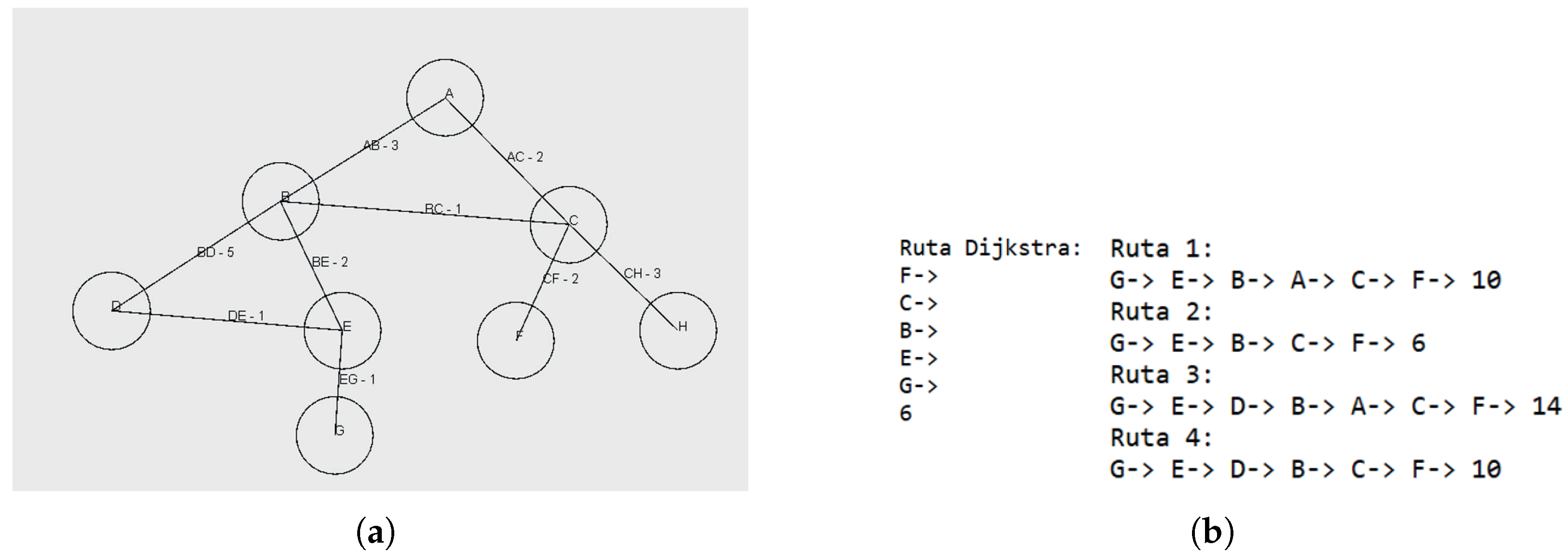
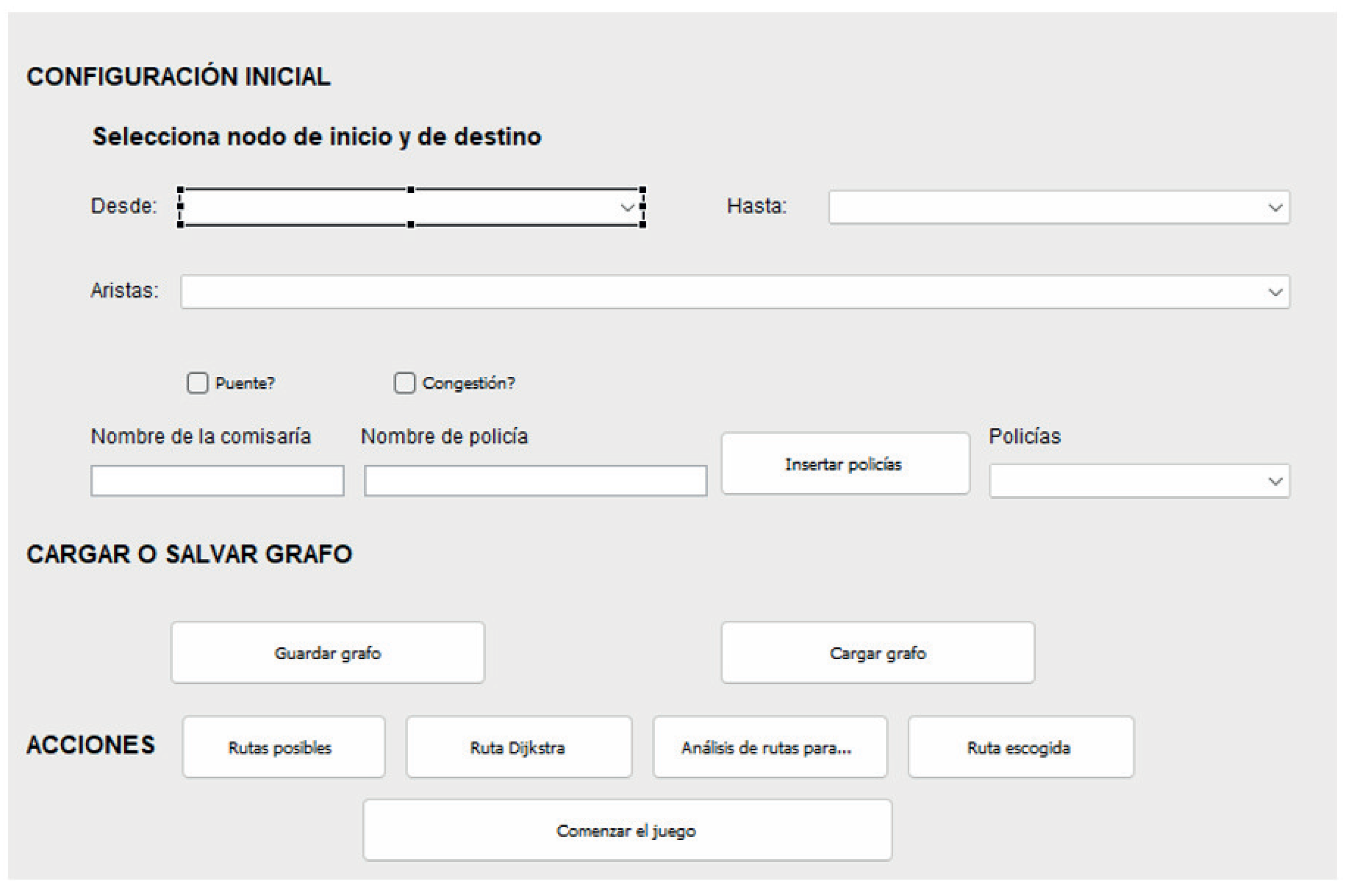
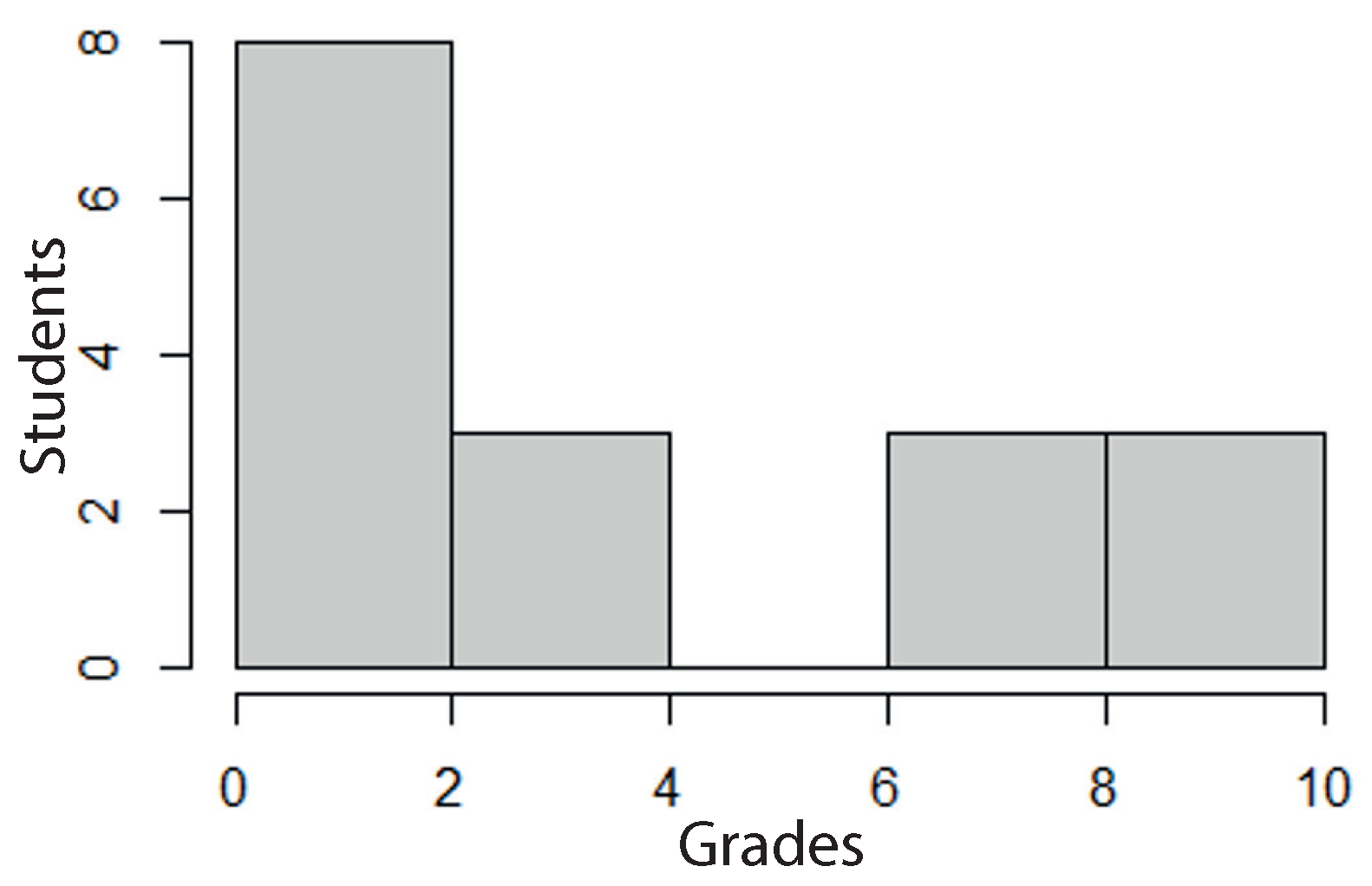
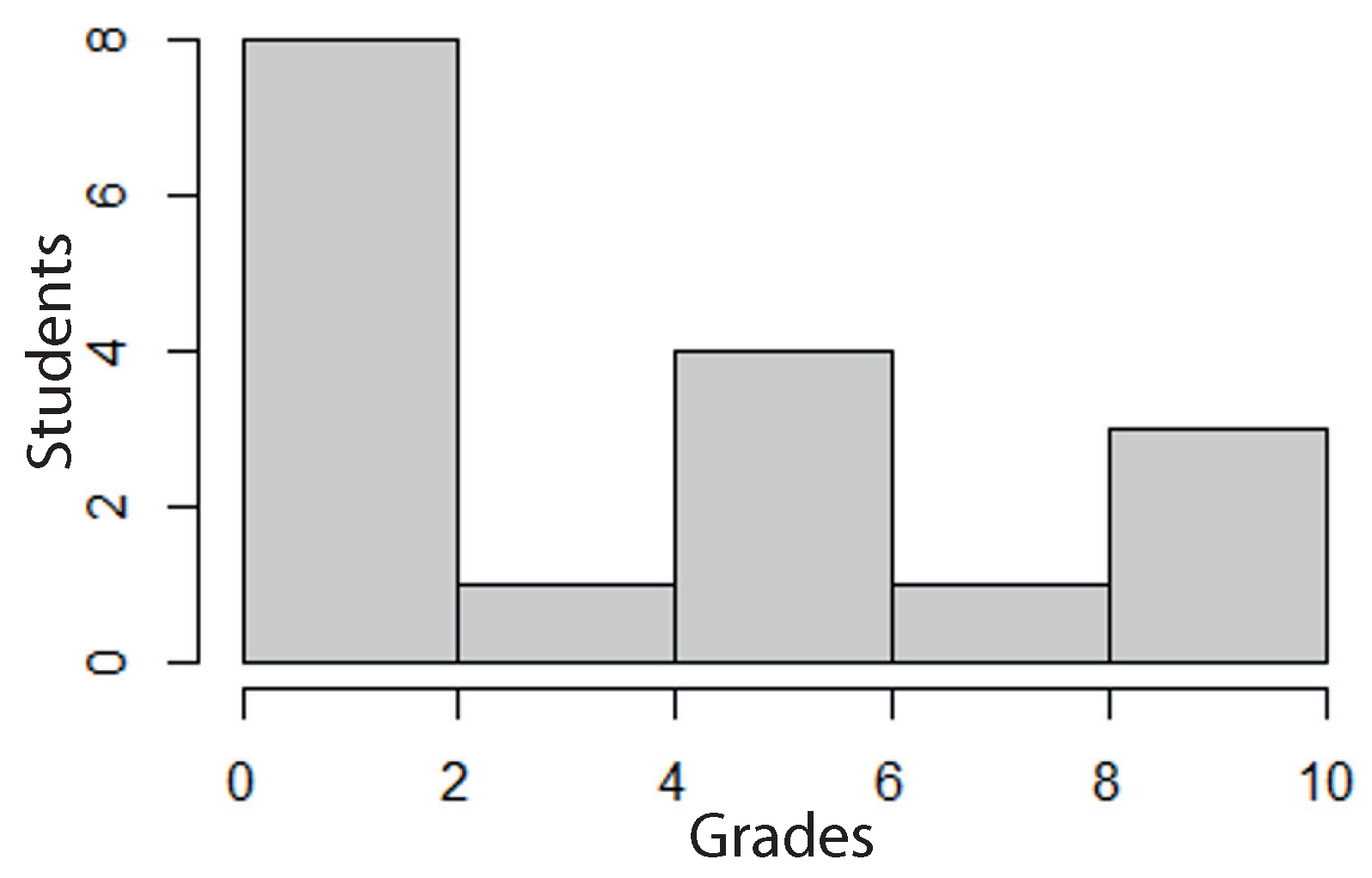
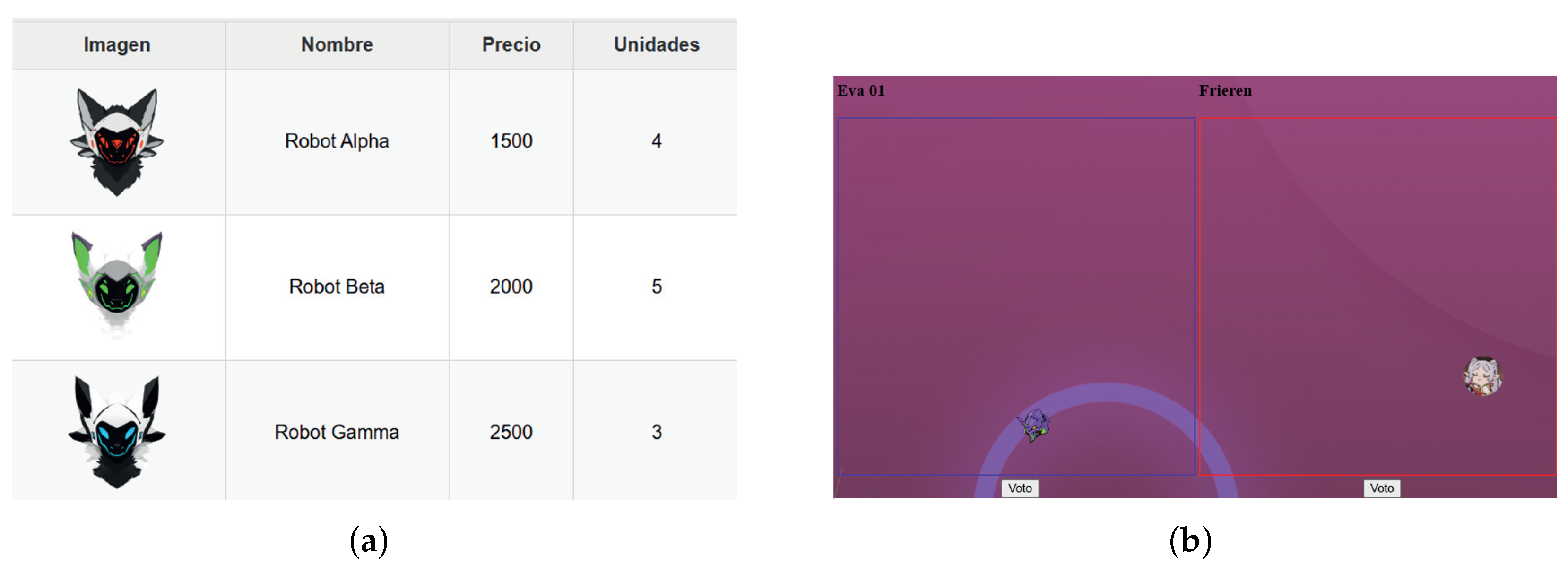
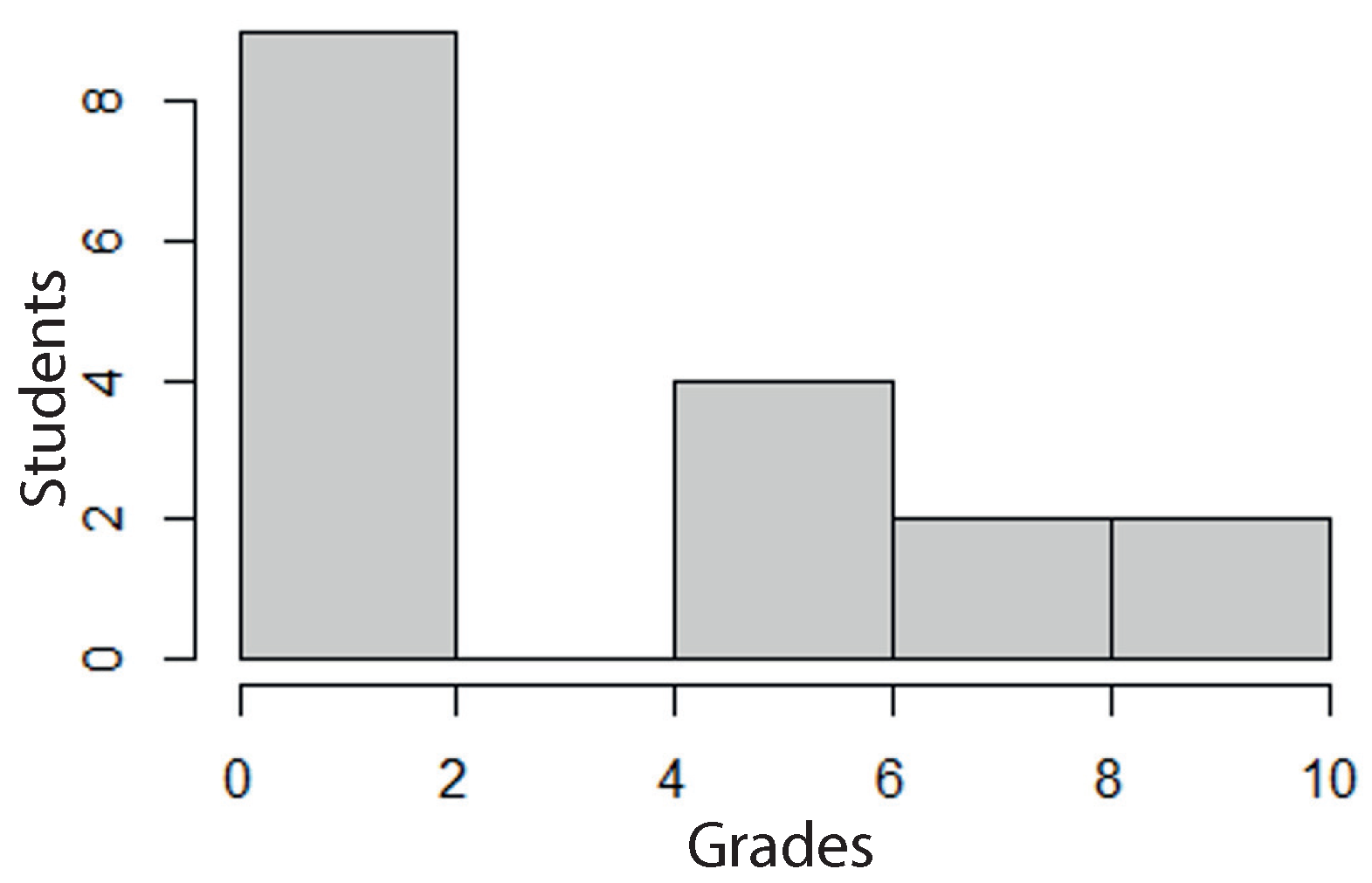
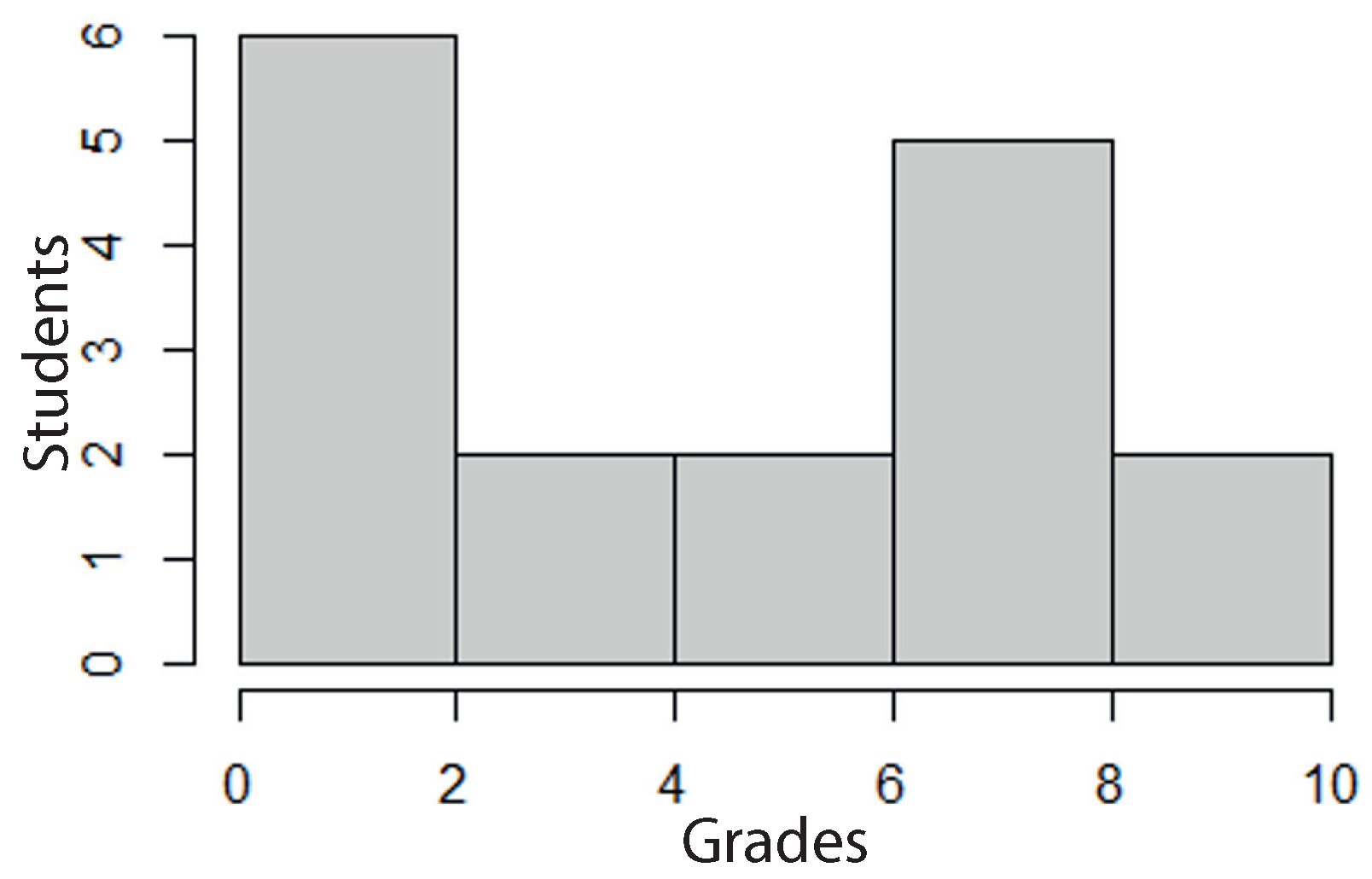
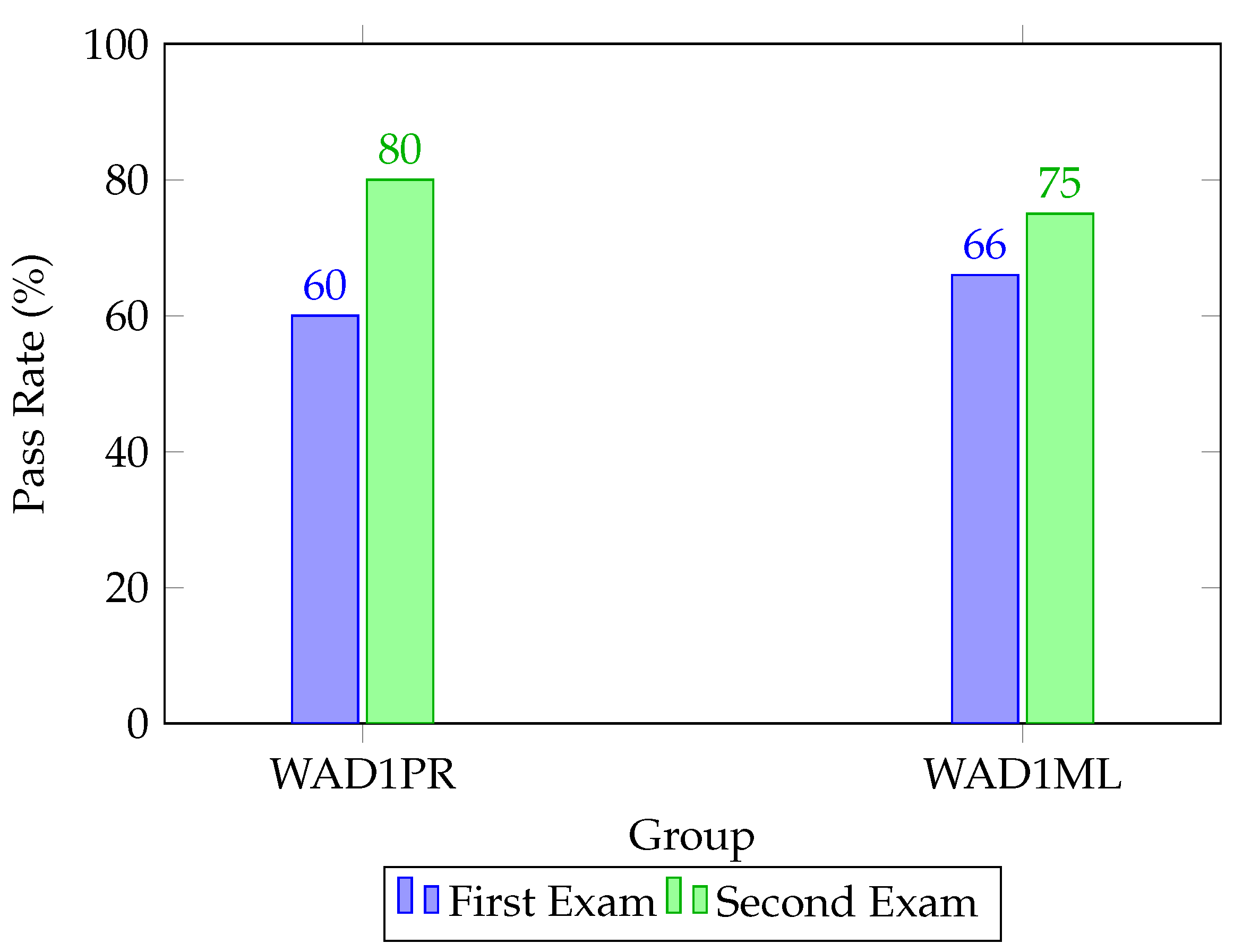

| Variable | Description |
|---|---|
| Group | First year of Web Application Design (subject: Programming) |
| Total students enrolled | 17 |
| Age range | 18–29 years |
| Gender distribution | 1 woman |
| Educational background | High school, middle school, higher education |
| Cultural/Economic context | Diverse: some foreign nationals, medium/low-income families, varied culture |
| Previous programming experience | 2 students had basic knowledge; rest had none |
| Attendance | 1 dropout early; 6 regular absentees |
| Class climate | Positive; students mature, collaborative, respectful |
| Additional notes | Actions taken to limit excessive use of AI tools |
| Variable | Description |
|---|---|
| Group | First year of Web Application Design (subject: Markup Language) |
| Total students enrolled | 20 |
| Age range | 18–28 years |
| Gender distribution | 6 women |
| Educational background | High school, CSE, vocational training, some university (finished/unfinished) |
| Cultural/Economic context | Medium–high income; some with university degrees |
| Previous programming experience | No prior experience in markup languages or programming |
| Attendance | 2 dropouts; 3 regular absentees |
| Class climate | Initially poor; rule-breaking, stress, low interest in learning |
| Disruptive profiles | 3 students refused to engage in the project |
| Skill | Instruments | Features |
|---|---|---|
| Problem understanding and analysis | Flow charts, pseudocode, etc. | The student understands the problem and recognises the input and output parameters as well as the internal processing of each subproblem. Interprets the logic correctly to transfer it to code easily. |
| Problem analysis | Class diagram and design | Designs classes with the correct attributes and methods. Identifies the interaction between classes correctly. |
| Implementation | Code | Correctly determines variable types. Identifies the most suitable algorithm and the need for parametrisation. Deduces the causes of errors (syntactic and logical). |
| Project Stages | Dijkstra | Possible Thief’s Routes | Obstacle Analysis and Final Route | Police Officers Strategy | Turns |
|---|---|---|---|---|---|
| Rate of completion (%) | 100 | 90 | 80 | 40 | 20 |
| Min. | Median | Mean | Std. Dev. | Max. |
|---|---|---|---|---|
| 0.000 | 4.000 | 3.641 | 2.89 | 9.800 |
| Min. | Median | Mean | Std. Dev. | Max. |
|---|---|---|---|---|
| 0.000 | 3.000 | 3.374 | 3.45 | 9.830 |
| Initial Number of Students | Dropout at the Beginning of the Course | No Evaluation by Regular Absenteeism | Project Passed | First Examination | Second Examination | Pass Rate |
|---|---|---|---|---|---|---|
| 17 | 1 | 6 | 6/10 (60%) | 6/10 (60%) | 2/4 (50%) | 8/10 (80%) |
| Min. | Median | Mean | Std. Dev. | Max. |
|---|---|---|---|---|
| 0.000 | 2.000 | 3.347 | 3.65 | 9.500 |
| Min. | Median | Mean | Std. Dev. | Max. |
|---|---|---|---|---|
| 0.0000 | 4.2294 | 4.1570 | 3.27 | 9.7350 |
| Initial Number of Students | Dropout at the Beginning of the Course | No Evaluation by Regular Absenteeism | Project Passed | First Examination | Second Examination | Pass Rate |
|---|---|---|---|---|---|---|
| 20 | 2 | 6 | 8/12 (66%) | 8/12 (66%) | 1/4 (25%) | 9/12 (75%) |
| Subject/Course | Students | Passed | Examination Pass Rate |
|---|---|---|---|
| ML 2023 Project | 16 | 8 | 50.0 |
| ML 2023 Final | 16 | 8 | 50.0 |
| ML 2022 Final | 15 | 11 | 82.5 |
| ML-DL 2024 Final | 24 | 8 | 33.3 |
| Group | Students Assessed | Passed—First Exam | Passed—Second Exam | Improvement (%) |
|---|---|---|---|---|
| WAD1PR | 10 | 6 (60%) | 8 (80%) | +20% |
| WAD1ML | 12 | 8 (66%) | 9 (75%) | +9% |
| Test | Variable/Groups Compared | p-Value | Interpretation |
|---|---|---|---|
| Shapiro–Wilk | WAD1PR Project Grades | 0.0024474 | Data not normally distributed |
| Shapiro–Wilk | WAD1ML Project Grades | 0.002134 | Data not normally distributed |
| Mann–Whitney U | WAD1PR vs. WAD1ML Project Grades | 0.2 | No significant difference in project performance |
| Kolmogorov–Smirnov | WAD1PR vs. WAD1ML Project Grades | 0.866 | Distributions are similar |
| Shapiro–Wilk | WAD1PR Exam Grades | 0.01326 | Data not normally distributed |
| Shapiro–Wilk | WAD1ML Exam Grades | 0.08829 | Data normally distributed |
| Mann–Whitney U | WAD1PR vs. WAD1ML Exam Grades | 0.004932 | Significant difference in exam performance |
| Kolmogorov–Smirnov | WAD1PR vs. WAD1ML Exam Grades | 0.7262 | Distributions are similar |
| Grades | Min. | Median | Mean | Std. Dev. | Max. |
|---|---|---|---|---|---|
| ML 2023 Project | 0.000 | 5.000 | 5.125 | 3.26 | 10.000 |
| ML 2023 Exam | 2.600 | 6.005 | 6.459 | 2.03 | 9.222 |
| Test | Variable/Groups Compared | p-Value | Interpretation |
|---|---|---|---|
| Shapiro–Wilk | WAD1ML Project Grades | 0.002134 | Data not normally distributed |
| Shapiro–Wilk | ML Project Grades 2023 | 0.1881 | Data not normally distributed |
| Mann–Whitney U | WAD1ML vs. ML2023 Final Project Grades | 0.1831 | No significant difference in project performance |
| Kolmogorov–Smirnov | WAD1ML vs. ML2023 Final Project Grades | 0.1184 | Distributions are similar |
| Shapiro–Wilk | WAD1ML Exam Grades | 0.08829 | Data normally distributed |
| Shapiro–Wilk | ML Project Exam 2023 | 0.471 | Data normally distributed |
| T Student | WAD1ML vs. ML2023 Final Exam Grades | 0.01283 | Significant difference in exam performance, better performance ML2023 |
| Test | Variable/Groups Compared | p-Value | Interpretation |
|---|---|---|---|
| Kruskal–Wallis | ML Final Grades across years (2022–2024) | 0.3181 | No significant difference between cohorts |
Disclaimer/Publisher’s Note: The statements, opinions and data contained in all publications are solely those of the individual author(s) and contributor(s) and not of MDPI and/or the editor(s). MDPI and/or the editor(s) disclaim responsibility for any injury to people or property resulting from any ideas, methods, instructions or products referred to in the content. |
© 2025 by the authors. Licensee MDPI, Basel, Switzerland. This article is an open access article distributed under the terms and conditions of the Creative Commons Attribution (CC BY) license (https://creativecommons.org/licenses/by/4.0/).
Share and Cite
Díaz-Lauzurica, B.; Moreno-Salinas, D. Active Learning Methodologies for Increasing the Interest and Engagement in Computer Science Subjects in Vocational Education and Training. Educ. Sci. 2025, 15, 1017. https://doi.org/10.3390/educsci15081017
Díaz-Lauzurica B, Moreno-Salinas D. Active Learning Methodologies for Increasing the Interest and Engagement in Computer Science Subjects in Vocational Education and Training. Education Sciences. 2025; 15(8):1017. https://doi.org/10.3390/educsci15081017
Chicago/Turabian StyleDíaz-Lauzurica, Belkis, and David Moreno-Salinas. 2025. "Active Learning Methodologies for Increasing the Interest and Engagement in Computer Science Subjects in Vocational Education and Training" Education Sciences 15, no. 8: 1017. https://doi.org/10.3390/educsci15081017
APA StyleDíaz-Lauzurica, B., & Moreno-Salinas, D. (2025). Active Learning Methodologies for Increasing the Interest and Engagement in Computer Science Subjects in Vocational Education and Training. Education Sciences, 15(8), 1017. https://doi.org/10.3390/educsci15081017








